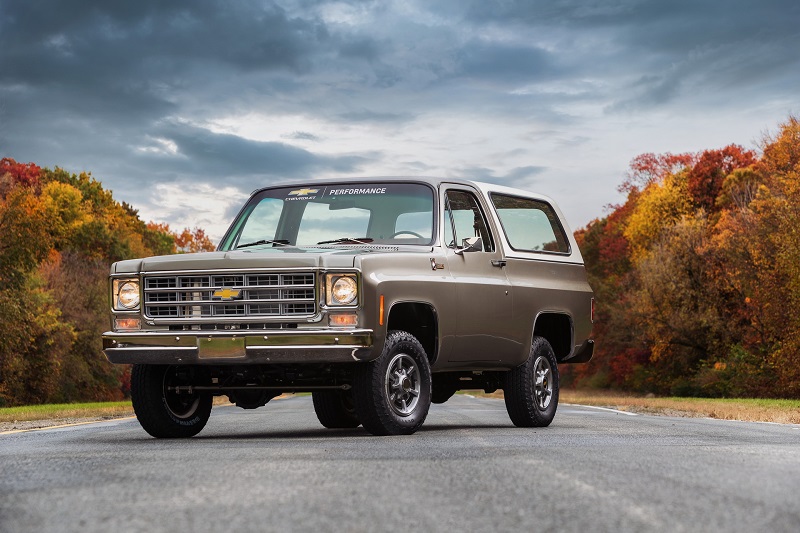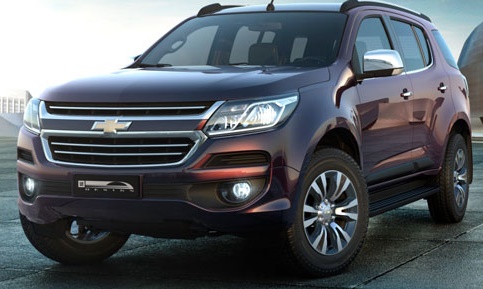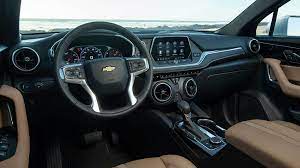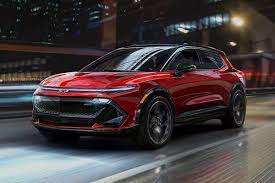The Chevrolet Blazer has a long history and has seen several different models and generations over the years.
- First Generation (1969-1972): The original Blazer was introduced in 1969 as a full-size SUV based on the Chevrolet C/K truck platform. It was available as a two-door convertible or a hardtop and had off-road capabilities. It was a rugged and versatile SUV popular for outdoor enthusiasts.
- Second Generation (1973-1991): The second-generation Blazer retained its full-size design, but it was restyled with a more squared-off appearance. It was available in both two-door and four-door versions. This generation of the Blazer was known for its durability and versatility.
- Third Generation (1992-1994): In the early 1990s, Chevrolet introduced a new design for the Blazer, which included features like four-wheel drive and improved safety features. The two-door version was still available during this generation.
- Fourth Generation (1995-2005): The fourth-generation Blazer marked a significant departure as it was no longer a full-size SUV. Instead, it became a midsize SUV. It was offered only as a two-door and later as a four-door model. This generation was smaller, more fuel-efficient, and aimed at a different market segment.
- Fifth Generation (2019-Present): After a long hiatus, Chevrolet revived the Blazer nameplate for the 2019 model year. This new Blazer is a midsize crossover SUV and is quite different from its predecessors. It features a modern and sporty design with two rows of seating, and it offers a range of modern technology and safety features. It’s available with multiple engine options and various trims to cater to a wide range of buyers.

Popularity of Chevrolet Blazer among American people:
The popularity of the Chevrolet Blazer among American people can vary depending on several factors, including the specific model year, the region of the country, and consumer preferences.
The popularity of the Chevrolet Blazer may vary from one generation or model year to another. Older, classic Blazer models may have a following among enthusiasts and collectors, while the newer, fifth-generation Blazer (2019 and beyond) has a more contemporary design and appeals to a different demographic.
The Blazer has transitioned from being a rugged, off-road-focused SUV to a more family-oriented, midsize crossover SUV in its latest generation. This shift in focus has changed its target market and popularity among consumers. The current Blazer competes with other midsize crossovers in a highly competitive market segment.
The popularity of the Blazer can also vary by region. Some SUVs and crossovers may be more popular in certain areas of the United States than others, depending on local preferences, climate, and terrai
The popularity of the Chevrolet Blazer may also be influenced by how it stacks up against competing SUVs and crossovers in terms of price, features, performance, and reliability. It competes with a wide range of vehicles in the midsize SUV segment.
Ultimately, the popularity of the Chevrolet Blazer among American people is subjective and depends on individual preferences and needs. Some consumers may appreciate the Blazer’s modern design and features, while others may prefer different SUVs or crossovers. It’s important to consider your own requirements and priorities when evaluating the popularity of the Chevrolet Blazer in the context of your own purchase decision.

Chevrolet Blazer in other countries:
The availability and popularity of the Chevrolet Blazer can vary in different countries around the world.
United States: The Chevrolet Blazer has a significant presence in the United States. It’s produced and sold domestically, and it competes in the midsize SUV segment. The Blazer is available in various trim levels and engine options, making it a competitive choice in the U.S. market.
Canada: Like in the United States, the Chevrolet Blazer is available and popular in Canada. Canadian consumers have access to the same models and trims offered in the U.S., and it’s considered a competitive option in the midsize SUV segment.
Mexico: The Chevrolet Blazer is also sold in Mexico, where it competes in the midsize SUV market. It is a well-recognized nameplate in the country.
Other North American Countries: The Chevrolet Blazer may be available in other North American countries to varying degrees, but its presence and popularity can differ from place to place.
South America: Chevrolet offers various SUV models in South American countries, including Brazil, Argentina, and Chile. The availability and popularity of the Blazer can vary depending on local market preferences and the specific Chevrolet product lineup in each country.
Europe: As of my last knowledge update, Chevrolet had significantly reduced its presence in the European market, and the Blazer was not a part of their lineup in Europe. In Europe, General Motors (Chevrolet’s parent company) had withdrawn from passenger car sales in most countries, focusing on other brands such as Opel and Vauxhall.
Asia: The Chevrolet Blazer may not be widely available in many Asian countries, as General Motors has often focused on other brands in the region. However, the situation can change over time, and General Motors may choose to introduce or reintroduce certain models in response to market demand.

Technical features of Chevrolet Blazer:
The technical features of the Chevrolet Blazer can vary depending on the specific trim level and model year.Here we discuss some of the features of the Chevrolet Blazer that are more or less common in all its models
Engine Options: The Chevrolet Blazer typically offers a range of engine options, including:
- 2.5-liter 4-cylinder engine
- 2.0-liter turbocharged 4-cylinder engine
- 3.6-liter V6 engine
Transmission: Most Chevrolet Blazers come with a 9-speed automatic transmission for smooth and efficient shifting.
All-Wheel Drive and Front-Wheel Drive: Depending on the trim level and drivetrain options, the Blazer can be equipped with either front-wheel drive or all-wheel drive for improved traction and handling in various road conditions.
Infotainment System: The Chevrolet Blazer typically features a modern infotainment system with a touchscreen display. It may include Chevrolet’s MyLink system, smartphone integration (Apple CarPlay and Android Auto), Bluetooth connectivity, and multiple USB ports.
Advanced Safety Features: Many Blazer models come equipped with advanced safety and driver assistance features, which may include:
- Forward collision warning
- Automatic emergency braking
- Lane departure warning
- Lane-keeping assist
- Blind-spot monitoring
- Rear cross-traffic alert
- Adaptive cruise control
Sound System: Depending on the trim level, the Blazer can be equipped with a premium audio system, such as the Bose sound system, for enhanced audio quality.
Interior Comfort: Features like dual-zone automatic climate control, leather upholstery, power-adjustable seats, and heated and ventilated front seats may be available on higher trim levels for added comfort and convenience.
. Connectivity: The Blazer may offer features like Wi-Fi hotspot capability, wireless charging, and multiple power outlets for electronic devices.
Cargo Space: The Chevrolet Blazer typically provides a split-folding rear seat for versatile cargo space. The specific cargo capacity can vary depending on the model and trim.
Tow Package: Some Blazer models can be equipped with a tow package for towing trailers or recreational equipment, with towing capacities varying by engine and equipment.
Wheels and Tires: Different trim levels may come with various wheel and tire options, including wheel size and design, which can affect the vehicle’s appearance and performance.

Advantages and disadvantages of Chevrolet Blazer:
Advantages:
Modern Styling: The fifth-generation Chevrolet Blazer (2019 and later) boasts a stylish and contemporary design that sets it apart from its competitors. It appeals to consumers who prioritize aesthetics.
Multiple Engine Options: The Blazer offers a variety of engine choices, including a 2.5-liter 4-cylinder, a 2.0-liter turbocharged 4-cylinder, and a 3.6-liter V6. This range of options allows buyers to select the engine that best suits their needs, whether it’s for fuel efficiency or performance.
Comfortable Interior: The Blazer typically offers a comfortable and well-designed interior with user-friendly infotainment systems and available premium features. It provides a pleasant driving experience for both the driver and passengers.
Advanced Safety Features: Many Blazer models come equipped with advanced safety features, such as forward collision warning, automatic emergency braking, lane-keeping assist, and blind-spot monitoring. These features contribute to safety on the road.
Ample Technology: The Blazer offers a range of technological features, including smartphone integration, a touchscreen infotainment system, available Wi-Fi hotspot, and optional premium audio systems.
All-Wheel Drive Availability: The Blazer can be equipped with all-wheel drive, enhancing its performance and handling in various road conditions.
Choice of Trims: The Blazer is available in different trim levels, allowing buyers to choose the one that best fits their budget and preferences.
Disadvantages:
Limited Cargo Space: While the Blazer offers reasonable cargo space, it may not be as spacious as some of its competitors in the midsize SUV segment. If you require extensive cargo capacity, you may find other models more suitable.
Fuel Economy: The larger engine options, such as the V6, can impact fuel economy, and the Blazer may not be as fuel-efficient as some other midsize SUVs with smaller engines.
Ride Quality: Some reviewers have noted that the Blazer’s ride quality can be a bit firm, especially on rough roads, which may not be as comfortable for passengers.
Price: Depending on the trim level and optional features, the Blazer can be priced in the midrange for midsize SUVs, and the cost may be a disadvantage for budget-conscious buyers.
Brand Preference: Some consumers may have brand preferences and loyalty to other automakers, which can influence their decision when considering a Chevrolet vehicle.
Resale Value: The Blazer’s resale value can be affected by factors such as its brand perception and how well it holds its value over time.
Conclusion:
The Blazer has its set of advantages, including its modern styling, multiple engine choices, comfortable interior, advanced safety features, and technological amenities. It caters to those who prioritize aesthetics and appreciate a well-appointed interior.
However, it also has its disadvantages, such as limited cargo space, fuel economy concerns with larger engines, and a somewhat firm ride quality. Price and brand loyalty may also influence a buyer’s decision.
Ultimately, the Chevrolet Blazer can be a compelling choice for consumers seeking a midsize SUV that offers a blend of style, performance, and comfort. It’s important to consider your individual needs and preferences when evaluating whether the Chevrolet Blazer aligns with your expectations. As with any vehicle purchase, conducting a thorough test drive and comparing it to competitors in the same segment can help you make an informed decision.
Read this article: Chevrolet camaro
Please visit the official Chevrolet Blazer website for more information

Leave a Reply